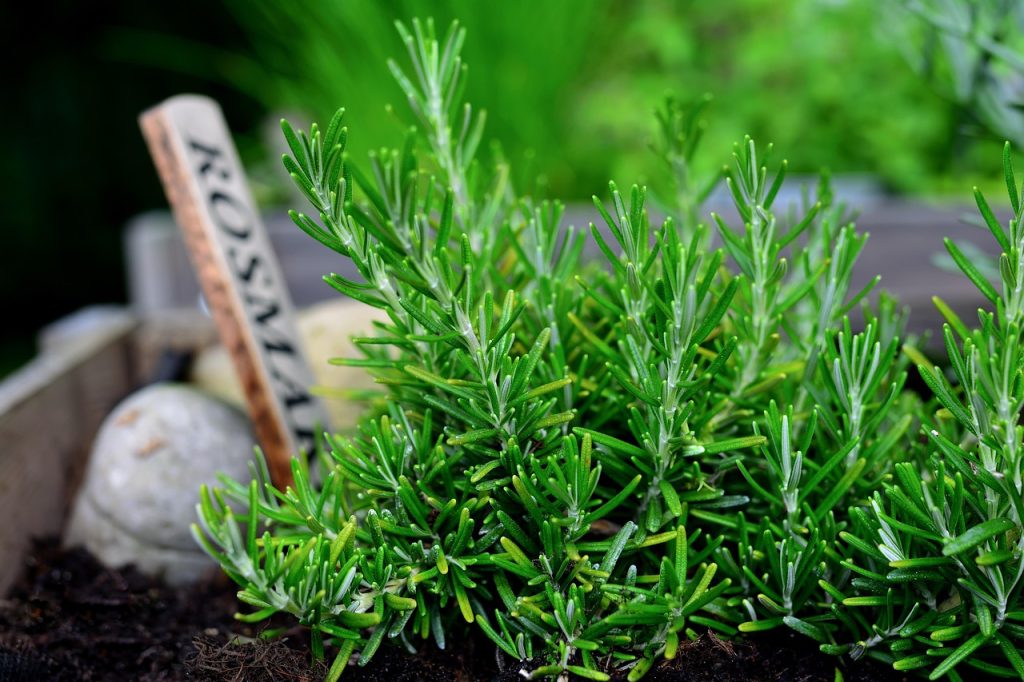Introduction to Rosemary
Growing Rosemary (Salvia rosmarinus) is a fragrant evergreen herb native to the Mediterranean region. Known for its aromatic, needle-like leaves and its usage in culinary dishes, rosemary has been cherished for centuries not only for its flavor but also for its medicinal properties. As a member of the mint family, rosemary is widely cultivated for its versatile applications, ranging from cooking to aromatherapy and even in ornamental gardening.

History and Origin
Rosemary has a rich history, dating back to ancient times. It was revered by the Greeks and Romans for its supposed memory-enhancing properties and was often used in religious ceremonies and burial rites. The herb’s name is derived from the Latin words ‘ros’ meaning dew, and ‘marinus’ meaning sea, reflecting its coastal origins. Over time, rosemary spread across Europe and eventually to other parts of the world, becoming a staple in gardens and kitchens alike.
Appearance and Varieties
Rosemary plants are characterized by their woody stems, which can grow to heights of up to 6 feet if left unpruned. The leaves are green, needle-like, and highly aromatic, giving off a distinctive pine-like scent. Rosemary produces small, pale blue, pink, or white flowers, typically blooming in the spring and summer. There are several varieties of rosemary, each with unique traits:
- Common Rosemary: The most widely grown variety, known for its strong aroma and flavor.
- Prostrate Rosemary: A low-growing variety ideal for ground cover or hanging baskets.
- Arp Rosemary: Known for its cold hardiness, making it suitable for cooler climates.
- Tuscan Blue: Noted for its larger leaves and vibrant blue flowers, often used in landscaping.
Growing Conditions
Light Requirements
Rosemary thrives in full sunlight, requiring at least six to eight hours of direct sun each day. Ideal for sunny windowsills or bright outdoor spots, insufficient light can result in leggy growth and reduced aromatic qualities.
Soil Preferences
Well-draining soil is crucial for Growing rosemary, as it is susceptible to root rot. A sandy or loamy soil with a pH between 6.0 and 7.5 is ideal. For those planting in pots, a cactus or succulent potting mix can help replicate the plant’s natural Mediterranean environment.
Watering Needs
Rosemary is drought-tolerant, preferring to dry out between waterings. Water deeply but infrequently, ensuring the soil dries completely before the next watering. Overwatering is a common mistake that can lead to root rot.
Temperature and Humidity
Rosemary prefers warm temperatures and can tolerate heat, but it should be protected from frost. While it can withstand mild winters, in colder climates it may need to be brought indoors or grown as an annual. High humidity is generally not an issue for rosemary, but adequate air circulation is essential to prevent fungal diseases.

Planting Methods
Starting from Seeds
Rosemary seeds can be slow to germinate, often taking several weeks. For best results, plant seeds indoors in a seed-starting mix, keeping the soil consistently moist and warm. Transplant seedlings outdoors once they are strong enough and after the last frost.
Transplanting Seedlings
When transplanting Growing rosemary seedlings, choose a location with plenty of sunlight and well-draining soil. Space plants about 2 to 3 feet apart to allow for air circulation and growth. Water thoroughly after planting to help establish the roots.
Propagation Techniques
Propagating from Cuttings
Propagating rosemary from cuttings is a simple and effective method. Follow these steps for successful propagation:
- Take a 4-6 inch cutting from a healthy rosemary plant, ideally from a non-flowering stem.
- Remove the leaves from the bottom half of the cutting.
- Dip the cut end in rooting hormone to encourage root development.
- Plant the cutting in a pot filled with a well-draining mix, such as a combination of sand and peat moss.
- Keep the soil moist and place the pot in a warm, bright location.
- Roots should develop in about 4-8 weeks, after which the new plant can be transplanted outdoors.
Seasonal Care
Rosemary requires different care throughout the seasons to thrive:
Spring
Begin pruning growing rosemary in early spring after the last frost to shape the plant and encourage bushier growth. This is also a good time to fertilize with a balanced, slow-release fertilizer.
Summer
Continue to monitor water needs, especially during hot, dry spells. Ensure the soil does not become too wet or dry. Harvest leaves regularly to promote new growth and prevent flowering.
Fall
As temperatures cool, reduce watering frequency and prepare to bring potted plants indoors if necessary. Ensure indoor plants receive adequate light and air circulation.
Winter
Protect outdoor rosemary plants from frost with mulch or frost blankets. Indoor plants may need supplemental lighting and should be kept away from drafts.
Common Problems and Solutions
Pests
Rosemary is relatively pest-resistant but can occasionally attract aphids, spider mites, and whiteflies. Regularly inspect plants and use insecticidal soap or neem oil to manage infestations.
Diseases
Powdery mildew and root rot are common issues. Ensure proper spacing for air circulation and avoid overwatering. Use fungicides if necessary to treat mildew.

Practical Uses of Rosemary
Rosemary’s uses extend beyond the kitchen. Its essential oil is popular in aromatherapy for its calming effects. In the garden, rosemary can act as a pest deterrent, and its flowers attract pollinators like bees. Additionally, rosemary has been used in traditional medicine for its antioxidant and anti-inflammatory properties.
FAQs About Growing Rosemary
In mild climates, rosemary can survive winter outdoors, especially cold-hardy varieties like Arp. In colder regions, consider overwintering indoors or providing frost protection.
Water rosemary deeply but allow the soil to dry out between waterings. Overwatering can lead to root rot, so it’s better to err on the side of underwatering.
Regular pruning, especially in early spring, encourages dense, bushy growth. Remove any leggy growth and shape the plant to your desired form.